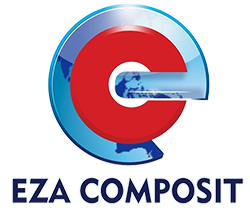Definition Of Enterprise Resource Planning Erp
Содержание
Businesses run on processes, and the tools they use to support those processes are extremely important. The better a tool supports business processes, the more effective and efficient a business is able to run. Terillium is an award-winning Enterprise Resource Planning consulting company and Oracle Platinum Partner. We specialize in helping businesses implement state-of-the-art technology solutions including Oracle JD Edwards, Oracle ERP Cloud, and Oracle NetSuite. As companies increase in size it’s easy to quickly outgrow existing processes and technology.
- Supply chain management involves planning, execution, control, and monitoring of supply activities.
- Improved business data security, whether storedon-premise or in the cloud.
- With access to these new technologies, organizations can quickly improve their business best practices as the ERP software evolves.
- An ERP is the best option for demonstrating value by providing real-time information to all employees of a corporation across departments.
- Usually the shop floor control functionality is very user friendly, making it easy for shop floor staff to report their time and start their work.
A complete ERP suite also includes enterprise performance management, software that helps plan, budget, predict, and report on an organization’s financial results. By now, you must be inquisitive to know, what is an ERP and how does it work? The ERP system works in a way to help you to increase your business’s efficiency, which in turn, improves your profitability. The ERP system is a business procedure managing software that allows you to collect and organize data through an ERP system software.
Sage 300cloud Streamline accounting, inventory, operations and distribution. Sage 300 CRE Most widely-used construction management software in the industry. Sage 100 Contractor Accounting, project management, estimating, and service management. It provides in-depth, practical advice on making your evaluation smooth, fair, and focused. There is a lot of information out there about ERP, and sometimes it is difficult to figure out exactly how to go about finding the right solution for your company. This no-nonsense guide helps you determine what is important to you, what questions to ask, and how to ask them.
What Is An Example Of An Erp System?
Modern ERP practices began in the 1990s due to the rise of computer software being integrated with daily business operations. Coined by the Gartner Group, the term originally focused solely on the new digital tools allowing manufacturers to ease supply chain management to control inventory, automate accounting, and do so much more. See the industry-leading enterprise resource planning cloud solution, serving as your integrated management of business processes and applications, to gain resilience and real-time agility, to position yourself for growth.
Businesses in this industry are often project-based and need tools for project planning and execution, managing project costs, strong customer relationship management and more. The ERP works by using the Business Intelligence tools, that provide data collection, analytics, and various reporting methods to keep you abreast of your company’s progress. With these accurate tools, you can get real-time insight into your company’s performance and see which processes or departments are lacking in service. Once you have identified the shortcomings of your company, you can invest more time, effort, and resources to make them perform better.

Folio3 Dynamics is specialized division of Folio3 that specializes in broad spectrum services around Microsoft Dynamics ERP stack. Online sales have to be dealt with separately from your physical store. This helps in monitoring the profit and sales achieved from your online store independently. We have covered our detailed MRP analysis in this MRP vs ERP guide. All your financial reports are present in one place; from your purchase orders to payroll- everything.
More Robust Security Resources
Moreover, though, the best ERP software systems to consider are those that are versatile. So, beyond simply being designed generally for K-12 school districts, the best ERPs will allow you to configure the options in a way that works according to your specific needs as a uniquely individual K-12 school district. Integration basically just refers to one piece of software’s ability to “speak” to another piece of software.

Enterprise resource planning systems include a variety of different modules. Each ERP module supports specific business processes – like finance, procurement, or manufacturing – and provides employees in that department with the transactions and insight they need do their jobs. Every module connects to the ERP system, which delivers a single source of truth and accurate, shared data across departments.
ERP stands for “Enterprise Resource Planning”, the consolidated process of gathering and organizing business data through an integrated software suite. ERP software contains a suite of applications which automates business functions like production, sales quoting, accounting, and more. Most businesses start out using a variety of simple, standalone tools to manage different business processes – such as QuickBooks or Excel spreadsheets. Here are five signs you’ve outgrown them and need a modernERP system.
Real-time order management modules can ensure you are able to fulfill your orders from anywhere. You can organize when workers come in for shifts, when inventory is delivered, and when your factories undergo maintenance. Then coordinate each schedule into a single calendar so all your departments and third-party partners stay on the same page. In the short span of the 21st century, faster https://globalcloudteam.com/ Internet speeds and new development tools have again revolutionized ERP suites. The introduction of browser-based software paved the way forcloud ERP software, a breakthrough that has expanded both the reach and the functionality of ERP solutions. ERP for finance can help you manage your daily accounting and financial close processes securely, regardless of your deployment approach.
Inventory And Warehouse Management
True cloud ERP software is developed specifically for cloud deployment and takes full advantage of the cloud environment. Cloud-based technology was born in the last decade and developed, as a core principle, with an entirely different mindset and understanding of not only what was possible but what was needed to be successful for ERP platforms. ERP also ensures that these data fields and attributes roll up to the correct account in the company’s general ledger so that all costs are properly tracked and represented. There are three main types of ERP systems that function with different deployment model options. The most common types of ERP systems include cloud ERP, on-premise ERP, and hybrid ERP. An ERP system can help small businesses streamline routine operational tasks, cut costs, and save valuable time.

Growing pains are a good problem to have, but like all other business challenges these issues need to be addressed in order to continue the path towards future progress. ERP system improves data quality by improving the underlying processes which help organizations to make better business decisions. It is a comprehensive tool that helps businesses manage all of the departments in one place efficiently; exactly what the ERP system software is supposed to do.
How Does Erp Support These Processes?
Cloud-based ERP applications are often embedded with next-generation technologies, such as the internet of things , blockchain, AI, machine learning, and digital assistants. The Statutory Accounting Principles are accounting regulations for the preparation of an insurance firm’s financial statements. The focus of SAP is to ensure the solvency of insurance firms so that they are able to meet the obligations to their policyholders. Needs to review the security of your connection before proceeding. Then, we took this alignment between ERP software and the unique needs of individual schools a step further.

ERP implementations are very difficult in decentralized organizations with different kind of business processes and systems. Here is a small sample of the most popular ERP vendors in our Software Connect network. For a more exhaustive list, check out our full list of enterprise resource planning software. New technologies have also led to an increase in cloud-based software. In recent years, many businesses have implemented cloud-based ERP solutions to gain additional workplace mobility due to an increase in demand for remote or work-from-home opportunities. Through these accessible systems, workers can log-in from anywhere and still get their work done without interruption.
Hybrid Erp
You do not need to outsource labor abroad to get information about your manufacturing plants. You can get better and more accurate insights into your business, comfortably in one place. ERP provides ways to improve communication outside your business with vendors and suppliers. You can also use customer relationship management tools to schedule external customer interactions, like quote follow-ups and lead tracking. Can you easily answer important questions about your business, such as revenue per product line or number of returns? If not, segregated systems and a lack of access to metrics and KPIs may be holding you back.
Oracle’s Short-Term Pain Could Be Your Long-Term Gain – ValueWalk
Oracle’s Short-Term Pain Could Be Your Long-Term Gain.
Posted: Tue, 20 Sep 2022 21:16:11 GMT [source]
The ERP software system shown here illustrates enterprise resource planning use cases for sourcing and procurement, as well as sales. Typical ERP modules also address finance, manufacturing, and supply chain, among other applications. The ERP landscape has shifted with the rapid evolution of software as a service cloud applications. Because of the mobile platforms and decentralized workforce–work anywhere and anytime–ERP systems can no longer be tied to yesterday’s on-premises back-office applications. The next-generation, cloud-based, and modern ERP solutions support the new industry dynamics while providing the ability to reduce support time to enable organizations to respond quickly to volatile markets and industry trends.
The core business processes of a general ERP system might weigh you down with unnecessary features. For example, schools need a way to organize student and staff schedules. Yet it would be unnecessarily cumbersome for all ERP products to include student attendance modules. Instead, it’s better for educational institutions to seek specific software to address those needs.
By collecting an organization’s shared transactional data from multiple sources, ERP systems eliminate data duplication and provide data integrity with a single source of truth. The practice of consolidating an enterprise’s planning, manufacturing, sales and marketing efforts into one management system. Combines all databases across departments into a single database that can be accessed by all employees. What is ERP ERP is an enterprise-wide information system that facilitates the flow of information and coordinates all resources and activities within the business organization. Functions typically supported by the system include manufacturing, inventory, shipping, logistics, distribution, invoicing, and accounting. An ERP implementation refers to the rollout of enterprise resource planning software within a business.
The cloud can reduce both operational expenses and capital expenses because it eliminates the need for companies to purchase software and hardware, or hire additional IT staff. These resources can instead be invested in new business opportunities, and the organization is always up-to-date on the most recent ERP software. Employees can shift their focus from managing IT to more value-added tasks such as innovation and growth. ERP systems tie together a multitude of business processes and enable the flow of data between them.
People sometimes erroneously use the terms accounting software and ERP software interchangeably. In reality, accounting and financial reporting software is a subset of an ERP system. We’ve built several different ERP software systems in order to more appropriately serve different types of school districts based on factors such as school/district size, location, and more.
How can these solutions manage organizations day-to-day business activities, such as accounting, finance, procurement, project management, supply chain, and manufacturing. Today, these software systems are found across a variety of industries, not just manufacturing. And since the early aughts, new ERP software is now available on cloud-hosted platforms for accessibility anywhere in the world. Global enterprises and small businesses alike can now automate their business processes through software.


Leave a Reply
Want to join the discussion?Feel free to contribute!